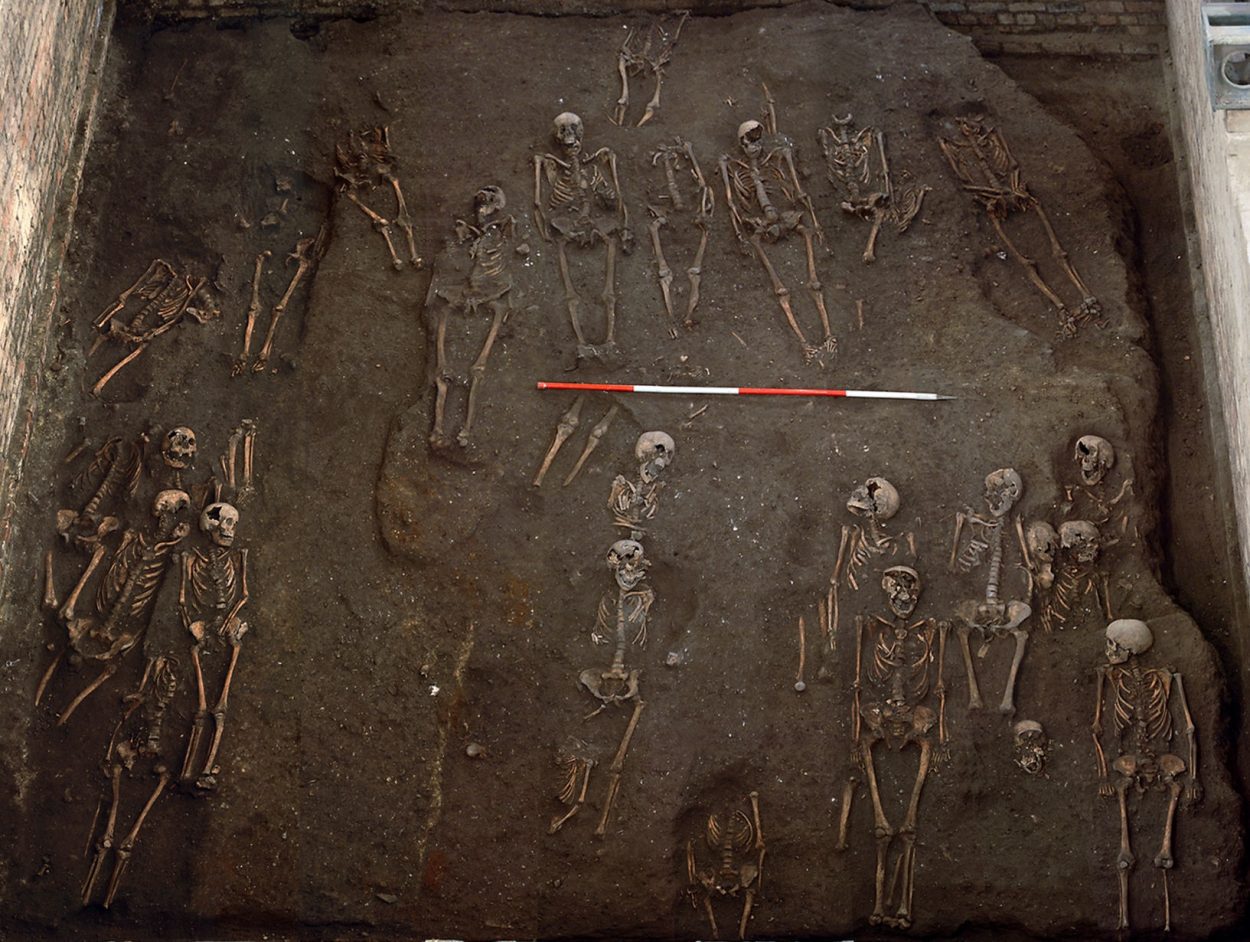Archaeologists from the University of Leicester have conducted a study in the main cemetery of the hospital of St. John the Evangelist, Cambridge, to provide new insights into the medieval benefits system.
The hospital was founded in 1195 to help the “poor and infirm”, housing inmates, clerics, and lay servants for around 300 years until the institution was replaced by St. John’s College in 1511.
The cemetery was first excavated in 2010, for which over 400 burials have been studied by combining skeletal, isotopic and genetic data.
“Like all medieval towns, Cambridge was a sea of need,” says Professor John Robb from the University of Leicester. “A few of the luckier poor people got bed and board in the hospital for life. Selection criteria would have been a mix of material want, local politics, and spiritual merit.”
The study, published in the journal Antiquity, provides new insights into how a medieval benefits system operated, and the kinds of people prioritised for help. “We know that lepers, pregnant women and the insane were prohibited, while piety was a must,” states Robb. Inmates were required to pray for the souls of hospital benefactors, to speed them through purgatory. “A hospital was a prayer factory.”
On average, inmates were shorter by an inch compared to townspeople and often displayed indications on their bones of childhoods affected by hunger and disease. Nonetheless, they exhibited lower incidences of physical trauma, implying that life within the hospital environment mitigated physical hardships or risks.
Children buried in the hospital were small for their age by an average of five years’ worth of growth. “Hospital children were probably orphans,” says Robb.
In addition to the impoverished individuals, certain skeletons displayed fewer indications of adversity, hinting that they were individuals who experienced adequate nutrition and were not engaged in manual labor. Professor Robb posits that these individuals “were early scholars of the University of Cambridge.”
Furthermore, researchers identified up to eight residents of the hospital whose isotope levels suggested a lower-quality diet in their later years. These individuals could potentially represent the ‘shame-faced poor’—those who descended from comfort into destitution, possibly after becoming incapable of working.
“Theological doctrines encouraged aid for the shame-faced poor, who threatened the moral order by showing that you could live virtuously and prosperously but still fall victim to twists of fortune,” stays Robb.
Crucially, this demonstrates the diversity within medieval poverty. Individuals from diverse backgrounds and with different life journeys found themselves in a position requiring charity. Additionally, this fact sheds light on why the hospital managed to endure for 300 years.
“They chose to help a range of people. This not only fulfilled their statutory mission but also provided cases to appeal to a range of donors and their emotions: pity aroused by poor and sick orphans, the spiritual benefit to benefactors of supporting pious scholars, reassurance that there was restorative help when prosperous, upstanding individuals, similar to the donor, suffered misfortune”, state the authors.
Header Image Credit : Antiquity







